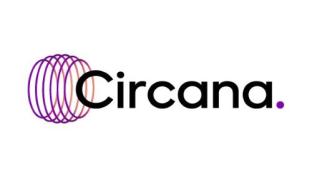How the ‘Lipstick Effect’ Is Boosting the Beauty Category

Beauty, a category that took a hit three years ago when people paused socializing outside the home, is back. There’s a new face to the category, too, as insights from Circana show.
According to Circana (formerly known as IRI and NPD), most beauty products are still sold at mass stores but high-end beauty stores are narrowing the gap. As retail competition intensifies, purchases across channels reveal some trends within the broader segment.
For one thing, shoppers seem to be trading up even during a time of inflation. “For many consumers, beauty is indispensable,” observed Larissa Jensen, beauty industry advisor at Circana. “In fact, among beauty shoppers who reported reducing their overall spending due to inflation, seven out of 10 said they were not cutting back on their beauty spending. On the contrary, consumers have shown us that when economic sentiment gets shaky, they turn to prestige beauty products for an emotional lift. This ‘treat mindset’ is a big piece of what ties the complete beauty industry picture together.”
For example, unit sales of everyday shampoo and conditioner slid in 2022 while the general hair care category boomed. Prestige hair care brands fared especially well. Likewise, Circana data shows growing sales for premium fragrances, driven by consumers’ desire for self-care.
Skincare products are doing well in mass stores, as facial skincare came in as the top-performing segment across the entire beauty category. “We are observing a democratization of the skincare market, as more consumers decide that they can actually spend less to get the desired results – whether that means purchasing lower price-points within the prestige stores or turning to dermatologist-recommended brands in mass outlets,” Jensen noted.
Other recent market insights point to similar strength in beauty, as shoppers seek to feel good about themselves despite a shaky overall economy. Fresh data from shopper intelligence firm Catalina underscores the “lipstick effect,” with people cutting back on big-ticket luxuries but still paying for affordable indulgences.
Drilling down, Catalina found that sales of cosmetics for the face, eyes and lips spiked in January, more than double the rate of sales during the fourth quarter of 2022. Gift sets, with bundles of makeup, fragrance and skincare, rose 78% on a unit sales basis in January.
The fact that sales of such items rose even as prices went up demonstrates that the nonfood category of beauty is solid right now. “While the U.S. has adroitly managed to avoid a recession so far, it’s enlightening to see how even the possibility has impacted shopper behavior across the primary cosmetic categories,” remarked Sean Murphy, chief data and analytics officer at Catalina. “The ‘lipstick effect’ is a real phenomenon that savvy marketers and retailers can glean insights from to help craft promotional offers and personalized messaging that resonate with shoppers and trigger sales.”
Meanwhile, brands and retailers continue to expand their offerings in the beauty space. In mid-March, for instance, Walmart rolled a new online portfolio of beauty items under the Clean Beauty at Walmart umbrella. According to Walmart, the products are made without any ingredients included on its Made Without List.







